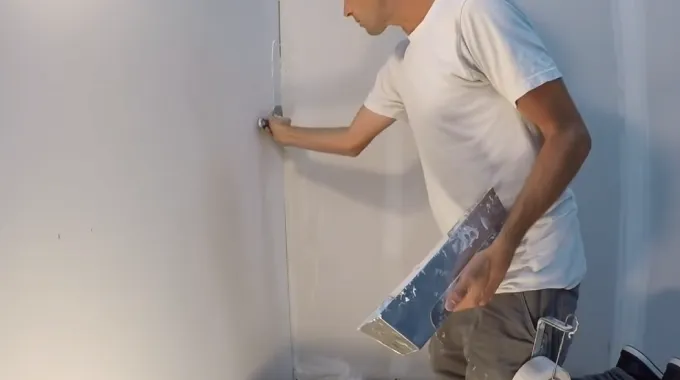Last Updated on January 10, 2023
Anybody who has ever worked with drywall knows that one of the most frustrating things is when the corners start cracking. It’s not only unsightly, but it can also be a sign that the entire wall is going to crumble.
Drywall corners are prone to cracking for a variety of reasons. Most often, it’s connected to the bulk of the drywall panels pulling against the nails or screws that are holding the panels in place. Another common reason for cracking is improper installation, such as not using enough screws or nails or not driving them in deep enough.
Throughout this article, we will discuss how to keep drywall corners from cracking in great detail and also provide some valuable insights on which will work and won’t work to keep drywall cracks at bay.
How to Keep Drywall Corners from Cracking: Proven Methods
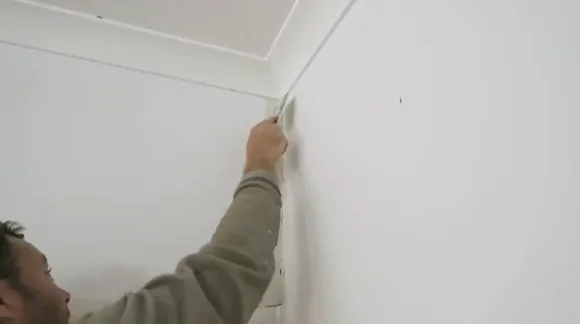
1. Use Enough Screws or Nails:
The most common cause of cracking is due to the weight of the panels pulling against the fasteners that are holding them in place. To prevent this from happening, make sure that you’re using adequate screws or nails when installing the drywall.
The general rule is to use one screw or nail per square foot of drywall. But, in areas where the drywall is particularly thin or where it will be subject to a lot of movement, you may need to use more fasteners to keep it secure.
2. Drive Them in Deep Enough:
One of the main culprits for drywall cracking is improperly installed fasteners. It’s not enough to just use sufficient screws or nails; you also need to make sure that they’re driven in deep enough.
The fasteners should be driven into the studs or joists so that they’re flush with the surface of the drywall. This will provide adequate support and help to prevent cracking.
3. Use Appropriate Fasteners and Angles:
It’s important to use the proper type of fastener for the job. Screws are generally better than nails, as they provide a stronger hold and are less likely to pop out over time. When attaching the drywall to the framing, make sure that you drive the screws in at an angle so that they pull the drywall tight against the frame.
4. Use Corner Beads:
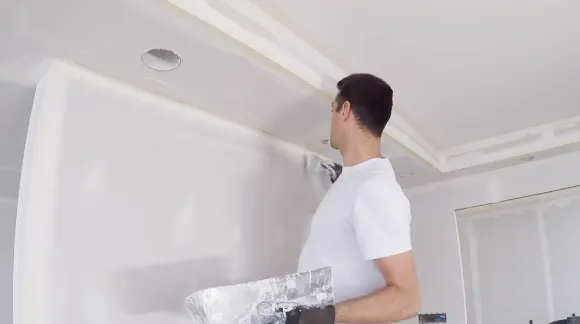
Corner beads are strips of metal or plastic that are attached to the corners of the drywall before taping and finishing. They provide additional support and help to keep the corners straight and prevent them from cracking.
Another benefit of using corner beads is that they can make it easier to get a smooth, professional-looking finish on your drywall. So, if you’re looking for a way to help prevent your drywall from cracking, be sure to use corner beads.
5. Use Joint Compound:
A joint compound is a type of plaster that’s used to fill in gaps and cracks in walls and ceilings. It can also be used to help reinforce weak spots and prevent forming drywall cracks.
Simply apply a thin layer of joint compound over any cracks or weak spots before painting or wallpapering for added protection. The joint compound is easy to work with and dries quickly, making it a great option for busy homeowners.
Plus, it can be easily sanded smooth for a professional-looking finish. When shopping for a joint compound, be sure to select the right type for your project. For example, a lightweight joint compound is best for patching small cracks, while an all-purpose joint compound can be used for larger projects.
6. Apply Tape:
Applying tape over cracks is another way to help prevent them from spreading and becoming worse over time. Tape provides an extra measure of protection and helps to hold everything together so that it doesn’t crack under pressure.
You can use any type of tape for this, but a masking tape is a good option because it’s thin and won’t add too much bulk.
7. Use Clamps:
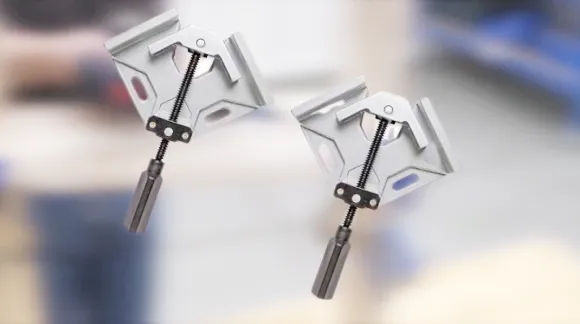
Clamps are a great way to keep drywall in place while it dries, which will help to prevent it from cracking at the corners. You can use C-clamps, pipe clamps, or even small spring clamps.
Just make sure that the clamp is tight enough to hold the drywall securely but not so tight that it bends the drywall or leaves marks. Also, be sure to put something soft between the clamp and the drywall to avoid damaging it.
Once the drywall is in place and clamped, you can leave it for 24 hours to allow it to dry completely. After that, you can remove the clamps and finish the job by taping and mudding the corners.
8. Use Straps:
Straps are placed over the corners of the drywall sheets and then screwed or nailed into place. This helps to keep the sheets from moving and cracking. Cracks often occur when the sheets are not properly secured, and they shift or settle.
The straps provide an additional level of support and stability, helping to prevent cracks. Another benefit of using straps is that they help to evenly distribute the weight of the drywall sheets, which can also help to prevent cracks.
9. Paint With Primer:
Painting your walls with primer before adding paint or wallpaper helps to seal any cracks and prevents them from spreading over time. Primer provides an additional layer of protection against cracking by creating a barrier between your walls and any potential damage-causing agents like water vapor or humidity fluctuations.
Can I Apply Fiberglass Mesh Tape to Drywall Corners to Keep Them from Cracking?
Using fiberglass mesh tape to reinforce drywall corners is a common practice to help prevent cracking. The tape creates a physical barrier that reinforces the corner and helps redistribute stress. It is important to apply the tape before applying the joint compound, as this will help ensure good adhesion.
When applying the tape, be sure to smooth it out so that there are no bubbles or wrinkles. Once the tape is in place, you can then apply a joint compound over it. The mesh tape will help create a strong and durable bond between the two layers of drywall, preventing cracks and ensuring a long-lasting repair.
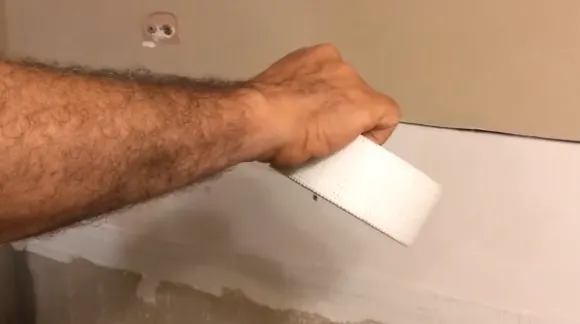
Can You Put Caulk in the Corners of Drywall to Keep it from Cracking?
While caulking can help to prevent cracking in corners, it is not a cure-all. Cracks can also form due to movement in the wall itself or due to changes in temperature or humidity. Also, caulking alone will not be enough to hold the corner together if the drywall tape has already come loose.
In general, it is best to seek professional advice before attempting any repair. They will be able to assess the situation and recommend the best mode of action.
But, if you do decide to caulk the corner, make sure to use a high-quality product that is designed for use on drywall. Applying too much caulking can also cause problems, so be sure to follow the manufacturer’s instructions carefully.
How Do You Know if Cracks in Your Drywall Corners Are Serious?
You should inspect your drywall regularly for cracks, especially if you live in an earthquake-prone area. Many minor cracks are harmless and can be easily repaired with a little putty or spackle.
But, some cracks may indicate more serious damage to your home’s structure. If a crack is longer than a few inches, if it is wider than a quarter-inch, or if it appears to be growing, it could be a sign of structural damage and should be inspected by a professional.
Also, beware of any cracks that appear in corners or near doors and windows, as these are common places for foundation settling. If you are unsure whether a crack is serious, it is always best to err on the side of caution and have it checked out by a qualified contractor.
Are Cracks in Drywall Corners Normal?
Cracks in drywall corners are normal and are caused by the house settling. The amount of settling that happens depends on the construction of the house, the materials used, and the environment.
For example, a house built on a sandy hill will settle more than a house constructed on a solid rock foundation. Besides, homes in areas with high winds or earthquakes are more likely to settle and develop cracks.
In most cases, drywall corner cracks are not a cause for concern and can be repaired easily with putty or caulk. But, if the cracks are large or numerous, it may be a sign of a more serious problem, such as foundation damage.

How Much Weight Can you Hang on the Drywall Corner Without Cracking?
When it comes to drywall corners, the amount of weight that can be supported before cracking varies depending on a few factors. The thickness of the drywall, the type of adhesive used, and the strength of the framing all play a role in how much weight the corner can support.
In general, a 1/2-inch thick piece of drywall can support up to 10 pounds without cracking, while a 1/4-inch thick piece can only support up to 5 pounds. But, if you use a stronger adhesive or reinforced framing, you may be able to hang more weight, not exceeding 15 pounds, without damaging the drywall.
So, Let’s Keep Your Drywall Corners Smooth and Stylish
Drywall corners are a common site for cracking, but this problem can be easily avoided with a few simple measures. By following our easy tips on how to keep drywall corners from cracking, you’ll be able to protect your walls and maintain their appearance.
Avoid using cleaning products that contain harsh chemicals, as these can cause the drywall to become brittle and more susceptible to cracking. Also, be sure to keep an eye on any leaks, as even a small amount of water can lead the drywall to swell and eventually crack.
Possibly a Good Match:
